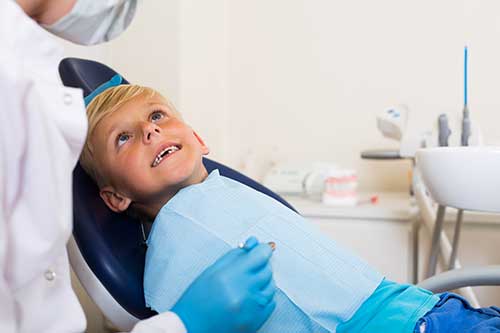Legacy Orthodontics - Truths
Legacy Orthodontics - Truths
Blog Article
Legacy Orthodontics for Dummies
Table of ContentsLegacy Orthodontics Can Be Fun For AnyoneLegacy Orthodontics Things To Know Before You Buy4 Easy Facts About Legacy Orthodontics DescribedThe Buzz on Legacy OrthodonticsThe Buzz on Legacy Orthodontics
At Advanced Orthodontics, we supply individuals with a all natural therapy experience. On top of that, we provide adjustable treatment schedules, versatile payment options and an enjoyable, enjoyable experience. leesburg orthodontics. Telephone call ( 480) 357-4900 today to learn more and routine a visit.An orthodontist is a dentist trained to detect, avoid, and deal with teeth and jaw irregularities. Orthodontists function with people of all ages, from children to grownups.
Malocclusion, or misaligned teeth, can bring about dental problems, including tooth decay, gum disease, and tough or agonizing eating. Not everyone is born with straight teeth. If you have a poor bite or big rooms between your teeth, you may intend to get in touch with a dental expert specializing in orthodontic treatment.
Some Ideas on Legacy Orthodontics You Should Know
( Picture Credit Scores: DigitalVision/Getty Images) Orthodontists utilize dealt with and removable dental devices, like braces, retainers, and bands, to change the placement of teeth in your mouth. Orthodontic treatment is for dental irregularities, consisting of: Jagged teethBite troubles, like an overbite or an underbiteCrowded teeth or teeth that are also much apartJaw misalignmentThe objective of orthodontic therapy is to enhance your bite.
A healthy and balanced bite guarantees you can consume, chew, and speak appropriately. While you could think about orthodontists as generally for youngsters or teenagers who require braces, they can fix oral issues at any kind of age. Orthodontists go to college, dental college, and orthodontic school. After graduation, they invest 2 or 3 years in an orthodontic residency program.
All orthodontists are dental experts, yet not all dental experts are orthodontists. Orthodontic residency programs supply intensive, focused instruction for oral professionals. They concentrate on 2 areas: How to appropriately and safely move teeth How to properly guide development in the teeth, jaw, and faceOnce an orthodontist has actually finished training, they have the choice to come to be board certified.
Legacy Orthodontics Fundamentals Explained
Malocclusion leads to tooth overcrowding, a twisted jaw, or irregular bite patterns. Malocclusion is normally treated with: Your orthodontist connects metal, ceramic, or plastic square bonds to your teeth.
If you have only minor malocclusion, you may be able to make use of clear dental braces, called aligners, rather than typical dental braces (https://issuu.com/legacyortho). Some people need a headgear to assist move teeth into line with pressure from outside the mouth. After dental braces or aligners, you'll need to wear a retainer. A retainer is a custom tool that keeps your teeth in position.
They're usually used on youngsters. They can create added space in the mouth without having to pull teeth. If you have a severe underbite or overbite, you could require orthognathic surgery (likewise called orthodontic surgical find here procedure) to extend or shorten your jaw. Orthodontists utilize wires, medical screws, or plates to support your jaw bone.
You may require to see an orthodontist if you have: Crowding or otherwise enough space for every one of your teethOverbite, when your top teeth come over your bottom teethUnderbite, when your base teeth are too far forwardSpacing or concerns with gapsCrossbite, which is when your upper teeth fit behind your bottom teeth when your mouth is closedOpen bite or an upright gap between your front base and upper teethMisplaced midline, when the center of your bottom and upper teeth don't align Fixing a dental malocclusion can: Make biting, eating, and speaking easierImprove the symmetry of our face and your overall appearanceEase discomfort from temporomandibular joint disordersDifferent your teeth and make them less complicated to clean up, helping protect against dental cavity or dental caries It's often a dentist that initially notifications misaligned teeth throughout a routine exam.
Indicators on Legacy Orthodontics You Should Know

During your first orthodontic consultation, you'll likely have: An oral examPhotos taken of your face and smileDental X-raysPanoramic (360 degree) X-rays of your face and headImpressions to create mold and mildews of your teethThese tests will certainly aid your orthodontist recognize just how to wage your therapy. clear braces. An orthodontist is a dental practitioner who's had training to treat your teeth and jaw
Orthodontists may carry out surgical procedure, exams,X-rays,and even more to help you attain a much more comfortable, healthier smile. An orthodontist is concentrated on your bite, so something like a broken tooth would certainly be dealt with by a dental practitioner. Orthodontists are dental experts but not all dental experts are orthodontists. Orthodontists are focused on your bite, or the way your teeth meshed, and the straightness of your teeth.
Ever before wondered how stars constantly appear to have flawlessly lined up teeth? Orthodontists are dental professionals who focus on remedying irregularities in the teeth and jaws.
The 7-Minute Rule for Legacy Orthodontics

, orthodontists have a varied toolkit at their disposal. These reliable braces utilize a system of brackets adhered to the teeth and linked by wires.
Clear aligners, like Invisalign, are a prominent alternative for patients seeking a more discreet therapy alternative. These removable trays are personalized to progressively shift the teeth's position. Headwear might be utilized together with braces or aligners to use added targeted forces, especially for remedying jaw discrepancies. In situations of slim jaws, palatal expanders can be used to create area for correct tooth alignment.
Report this page